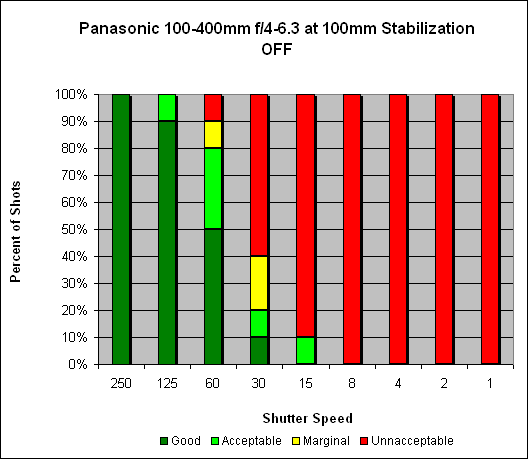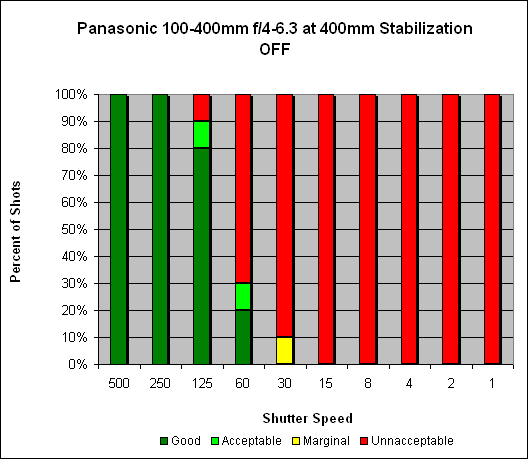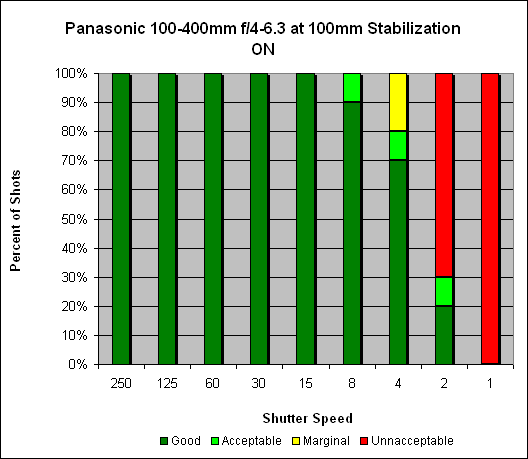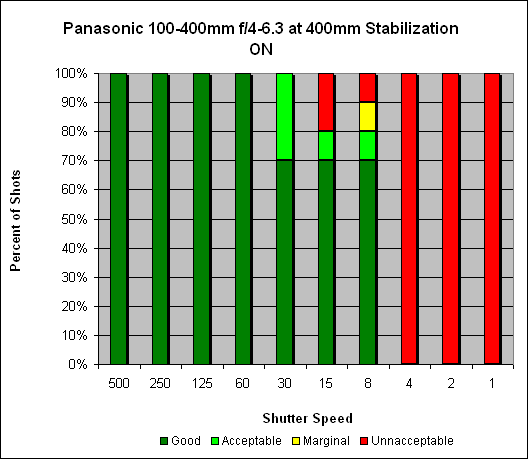Most people tend to think of image stabilization as being mainly for telephoto lenses. While it's true that their longer focal lengths tend to magnify the effects of camera shake, image stabilization can provide a very useful assist at wider angle focal lengths as well; anyone who's ever tried to blur the image of a waterfall, while keeping the surrounding landsape tack-sharp knows exactly what I'm talking about.
At 100mm, with image stabilization turned off, we see what we'd expect to see - reliably sharp shots are obtained at the 1/125s setting, and it gets worse from there. With image stabilization turned on, we get reliably sharp shots at speeds as slow as 1/15s, and 90% sharp at 1/8s - so somewhere between 3 and 4 stops of hand-holding improvement.
 |
| Mouse over this chart to show results with IS activated. |
Zoomed in to 400mm, it's almost the same story. With IS turned off, we are seeing reliably sharp shots at 1/250s (Rob was in great form that day). With IS turned on, we get sharp shots at speeds as slow as 1/60s, or an improvement of 2 stops: if you count the 30% acceptably sharp shots at 1/30s, you could even call it 3 stops. As always, your mileage will vary.
 |
| Mouse over this chart to show results with IS activated. |
IS systems tend to provide more benefit to less-stable shooters than very steady ones, so most users will see the same or greater amounts of shake reduction as we measured here. You can read more about our IS test methodology here: SLRgear IS Test Methodology, v2.

